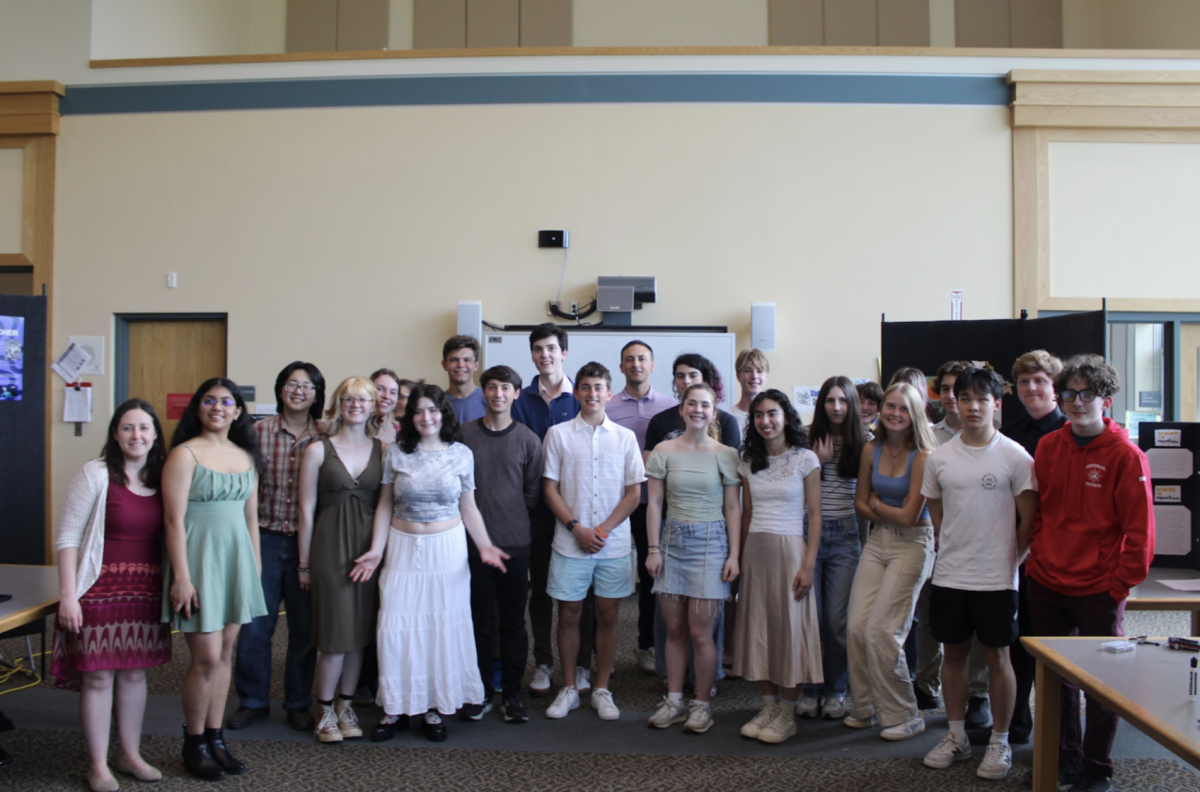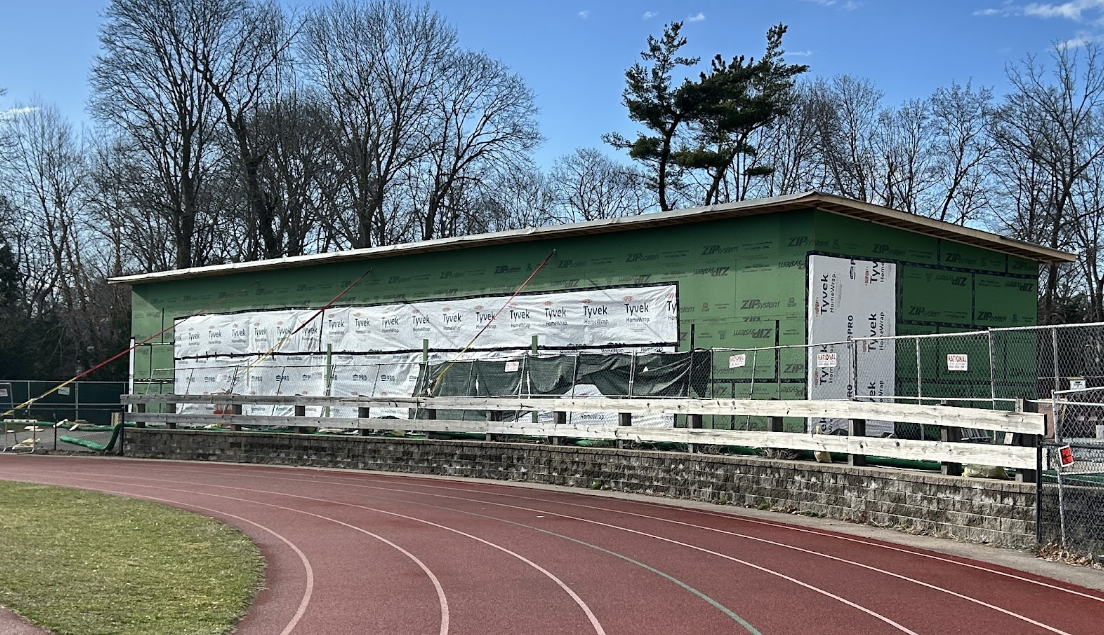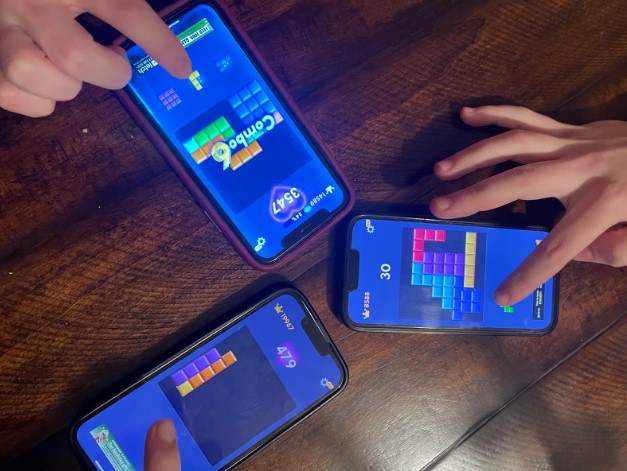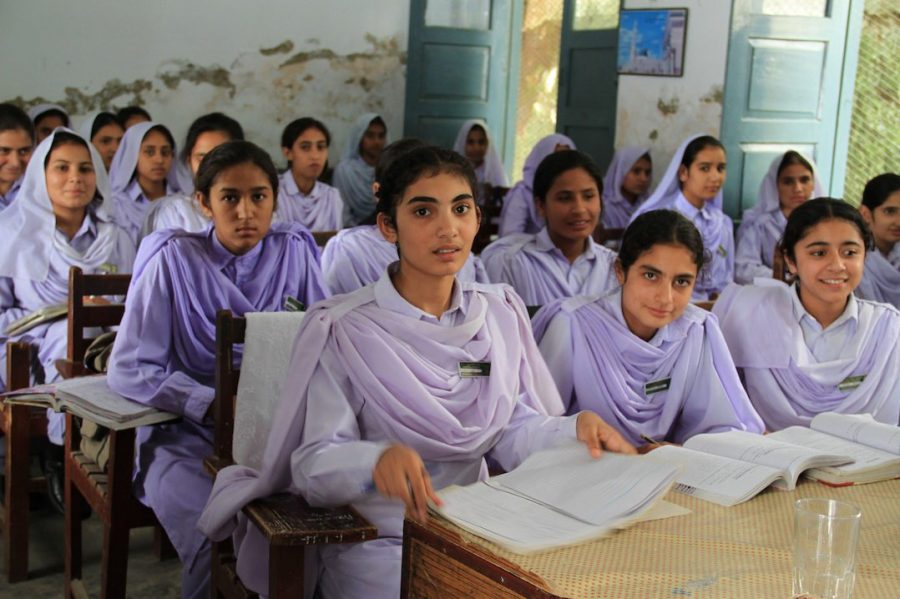The Impact of COVID-19 on Girls’ Education Around the World: Unleashing the Female Potential
Girls congregate in Pakistan where nearly 56% of the 22.6 million children are not in school.
November 26, 2021
The COVID-19 pandemic has resulted in turmoil of education that threatens to retract the gains made in education access and opportunity. This disruption has had a significant effect on girls’ academic learning with great socio-economic consequences such as little access to in-person school and distance learning, the need to earn additional income, more demanding home-life obligations, increased gender-based violence, child labor, teenage pregnancy and marriage, and more. This issue is majorly prevalent in developing countries in the East Asia and Pacific region, in which girls’ rights are commonly undermined. Over 15 million girls in the region already were not permitted to attend school or were not enrolled in school before the disease outbreak. This number was previously doubled at 30 million over the past two decades which marked a great achievement. However, an estimated 20 million secondary-aged girls globally have dropped out of school due to COVID-19, with 1.2 million being from the EAP region.
A UNICEF Study reports that, “In the East Asia and Pacific region, between 8.7 and 11.5 million additional girls are estimated to live in monetary poor households as a result of the economic contraction following COVID-19.” Moreover, “a survey conducted by UNICEF in Thailand with almost 7,000 participants found 82% of female respondents reporting to be worried about financial difficulties of the family.”
Recent research also shows that the gender gap is widening more than ever, especially in developing countries. The distance learning programs of such nations are not always of adequate quality. Additionally, the lockdown, financial family stress, and loss of school support systems and friends have led to increases in girls’ stress and mental health issues, which in-turn negatively affects their ability to learn.
The Education Nonprofit Girl Rising declares, “A girl getting an education learns more than reading and arithmetic. She learns that she is important. She stands up for her rights. She goes after her dreams. And this kind of change happens fast.” Thus, educating a girl creates a much bigger umbrella of interconnectedness and thought in our world than it may seem for some masculine-favoring institutions and governments. Educating a girl leads to the education and progression of a nation. The cycle of poverty limiting girls’ education will perpetuate until the millions of girls that have been forced out of school are allowed to return to learn.
A study published by the Malala Fund encapsulates this systemic problem rooted much deeper than the pandemic rooted in gender inequality and racism, to name a few. The study highlights ways governments should work to encourage millions girls’ to go back to school by working with stakeholders to keep them engaged in learning, collect gender-disaggregated data to see if girls’ enrolment is improving, work with Ministries of Health and Education to make timelines and standards to reopen schools, and community education programs and waiving examination fees.
Although this issue may seem too big a task for a single group or foundation to tackle, every small contribution helps stop the devastating cycle. In an inspiring article by the Malala Fund: Assembly tells of the drastic impact of girls’ education in India. The Azad Indian Foundation works on getting government scholarships for young women and girls in minority communities. You can donate to the Malala Fund to support organizations working to close the achievement gender gap like The Azad India Foundation.
Furthermore, you can also donate or volunteer with Room to Read, a nonprofit that works to improve the lives of children in impoverished communities through education and literacy, especially as a new wave of the virus is threatening the African continent.
Some Hingham High Students have heard about the learning crisis affecting 1.6 billion children and regressing girls’ educational progress. Sophomore Geneive Vale expresses, “I think it’s really awful that a ton of girls haven’t gotten access to education because of COVID. They deserve to learn so they can help stop the cycle of illiteracy and poverty.” Sophomore Sarah Kelly comments, “I have heard a little bit about this issue but did not realize the full extent of the impact it has had on girls all over the world who haven’t been able to learn.” To mitigate against girls’ long-term dropout of school, governments, organizations, and people must work together to create a better female future that begins with education.
Additional resources:
https://www.ohchr.org/en/NewsEvents/Pages/COVID-19-and-education.aspx
https://www.voicesofyouth.org/blog/why-we-should-support-girls-education

































